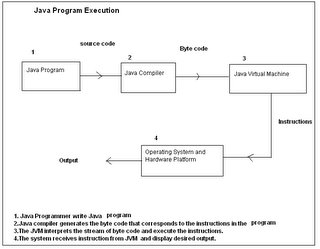History Of Java.
Let’s take a ride to Java’s history.
History goes back to late 1970’s when Bill Joy (chief scientist at Sun Microsystems) wanted to design a language that could be used for consumer devices like cable TV switchboxes. Joy decided that C++ and other languages was inadequate for this job, so they decided to write a language that should be short and highly effective, as the language is supposed to work on different architectures so it should be platform independent.
Joy with other group of engineers like James Gosling, Mike Sherolin, Patrick Naughton and several others decided to work on the idea to develop programming tool and the name of the project was given Green Project.
Now the first question was that, what will be the name of new language?
They decided to name the language as “Oak” (While James Gasoline was staring at an Oak tree outside his office window), later that name was dismissed as it was copyrighted and used for some other languages.
It was becoming difficult for the team to decide the name of new language, later the name “Java” struck one day during a visit to local coffee shop.
There were certain objectives the “Oak” has to meet in the consumer electronic market. As the market is filled with huge crowd of manufacturers, the main requirement of Oak was completely platform independent, regardless of the type of CPU in the device. This was the main reason Oak was deigned to be interpreted language, as compiled version cannot run on all platforms.
Job of interpreter was to create intermediate “byte code” for hypothetical machine. One more advantage was also there by doing so that as both code and interpreter was small, issues related to size was solved.
Why they decided to keep size small?
They have thought of the popularity of Oak, they have in their mind if Oak will be successful in the electronic industry, and then it should be mastered easily and in less span of time.
One more concern was there i.e. the security, as Oak based devices were accepted to work on network and they are supposed to exchange code and information, for this reason they decided to exclude pointers, so that nothing could access arbitrary address in the memory.
In April 1991 within two months with the effort of the team a hardware prototype known as “*7” was developed, by august of 1991, the team had a working prototype of the user interface and graphical system.
Work was going on for the development of an operating system, a language, an interface, and a new hardware platform through the summer of 1992.
In sep the *7 prototype was completed, it was a PDA-like device.
Unfortunately, the market did not accepted this type of technology and the battle has started to sell this new technology, even no one was interested in producing this at Sun.
In Nov 1992, the Green Project was united under the name First Person, this gave Java unsuccess in consumer electronics market.
First Person spent great amount of time to make market for the technology, but everything was in vain and finally First Person was dissolved in 1994. Most of the employees were moved to other division, but few persons still persuaded the objective of finding home for new technology.
While all this was going on, Internet was getting its popularity. The World Wide Web has requirements such as reliability, security and architectural independent; all there were fully in accordance with Java’s design parameters.
By sep of 1994, Naughton and Jonathan Payne started writing “Web Runner” later it was known as “Hot Java”. It was written in Java to show its capabilities and power, the browser was capable of interpreting the intermediate byte code.
Well despite being designed for different objective java has found its match in World Wide Web.
The introduction of Java in the information market is realized as emergence of new era in the history of web.
Sun formally announced Java and Hot Java at SunWorld’95 (May 23, 1995) In January 1996, Netscape 2.0 was released, that was Java enabled. From then everybody started supporting Java like Microsoft also announced they would support Java in their Internet Explorer Browser.
After all these failures and successes Java has finally arrived and became so popular in the tech market.
This is a true saying “Hard Work Really Pays”

